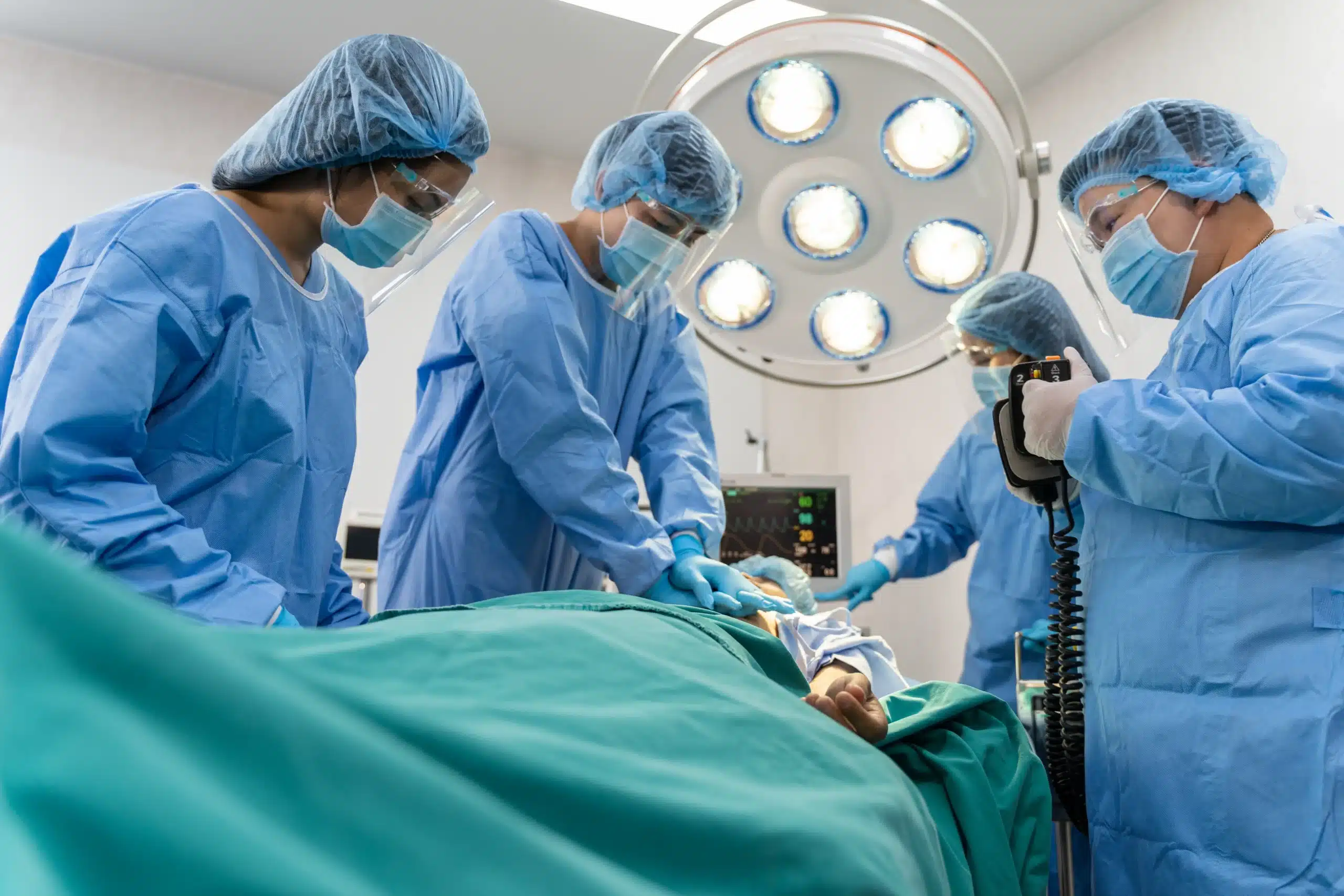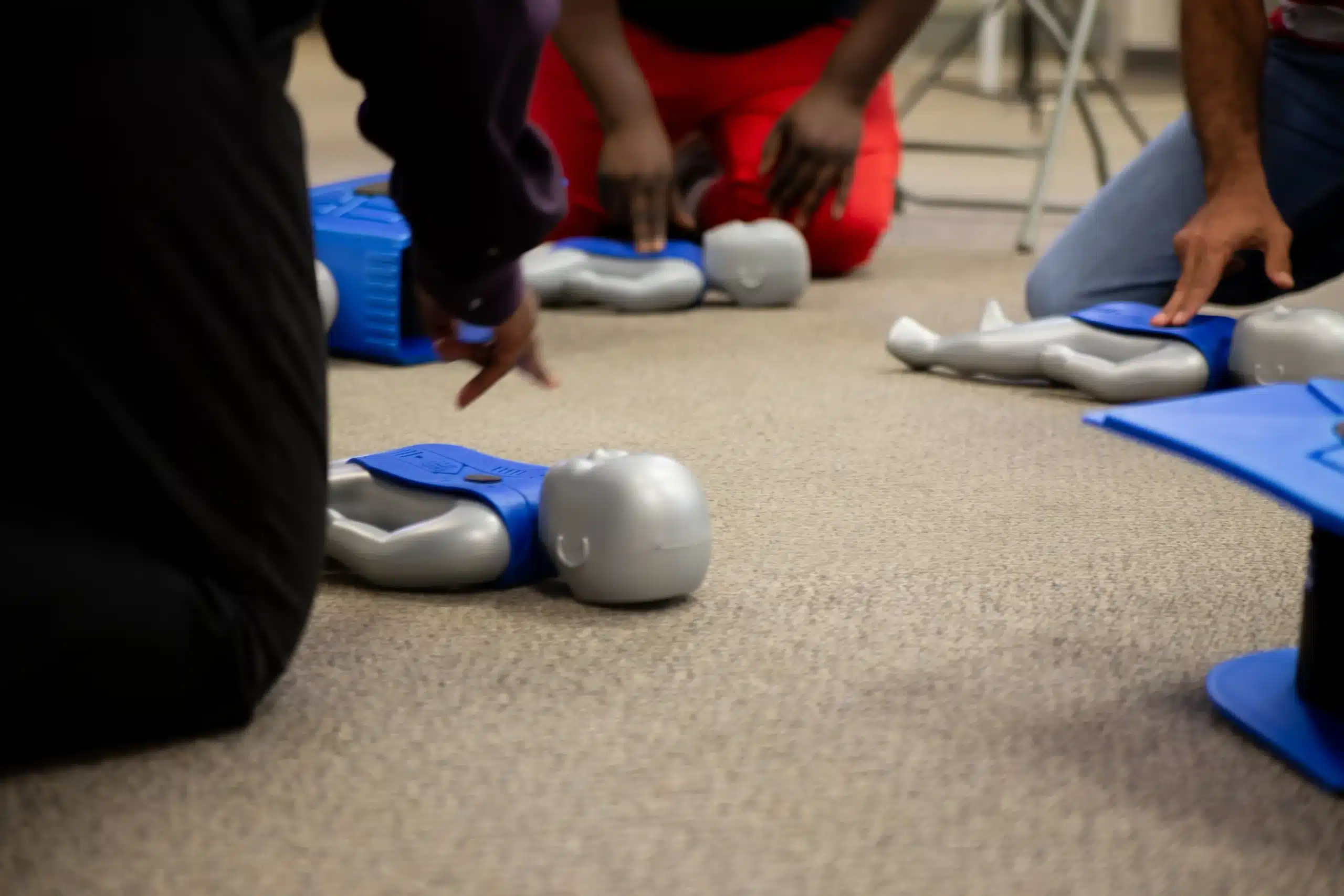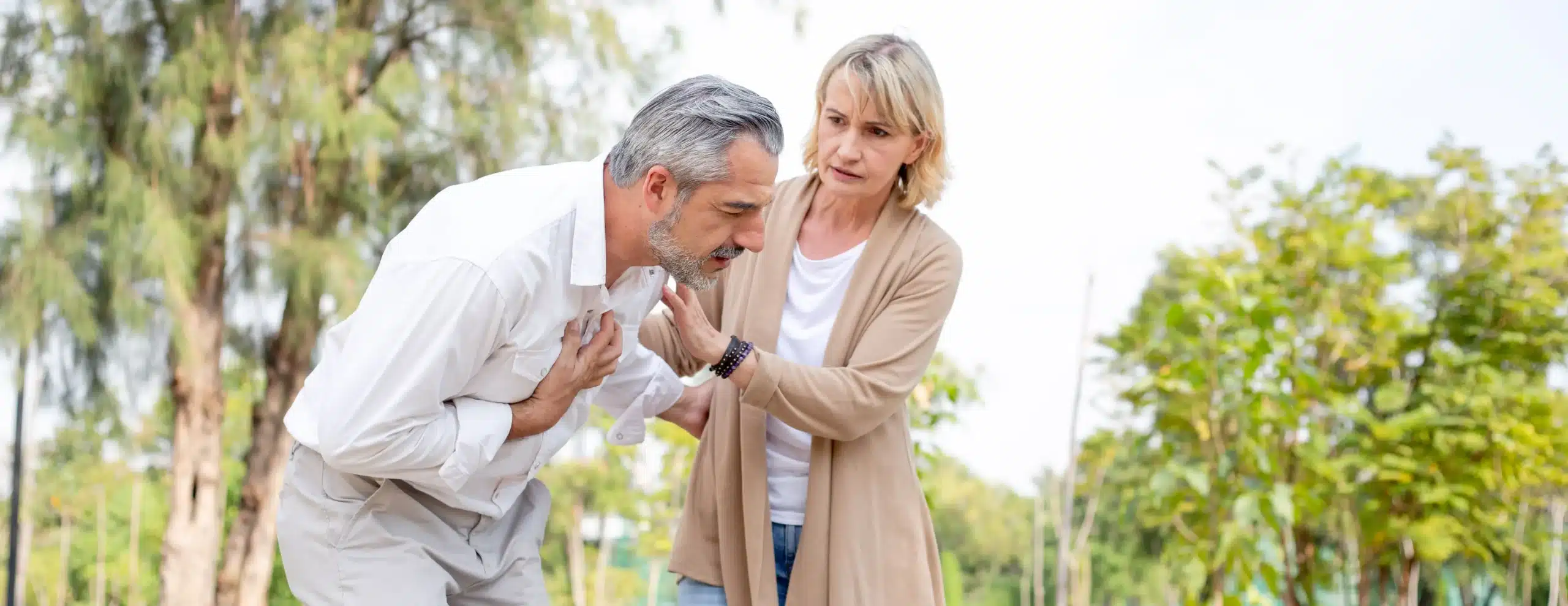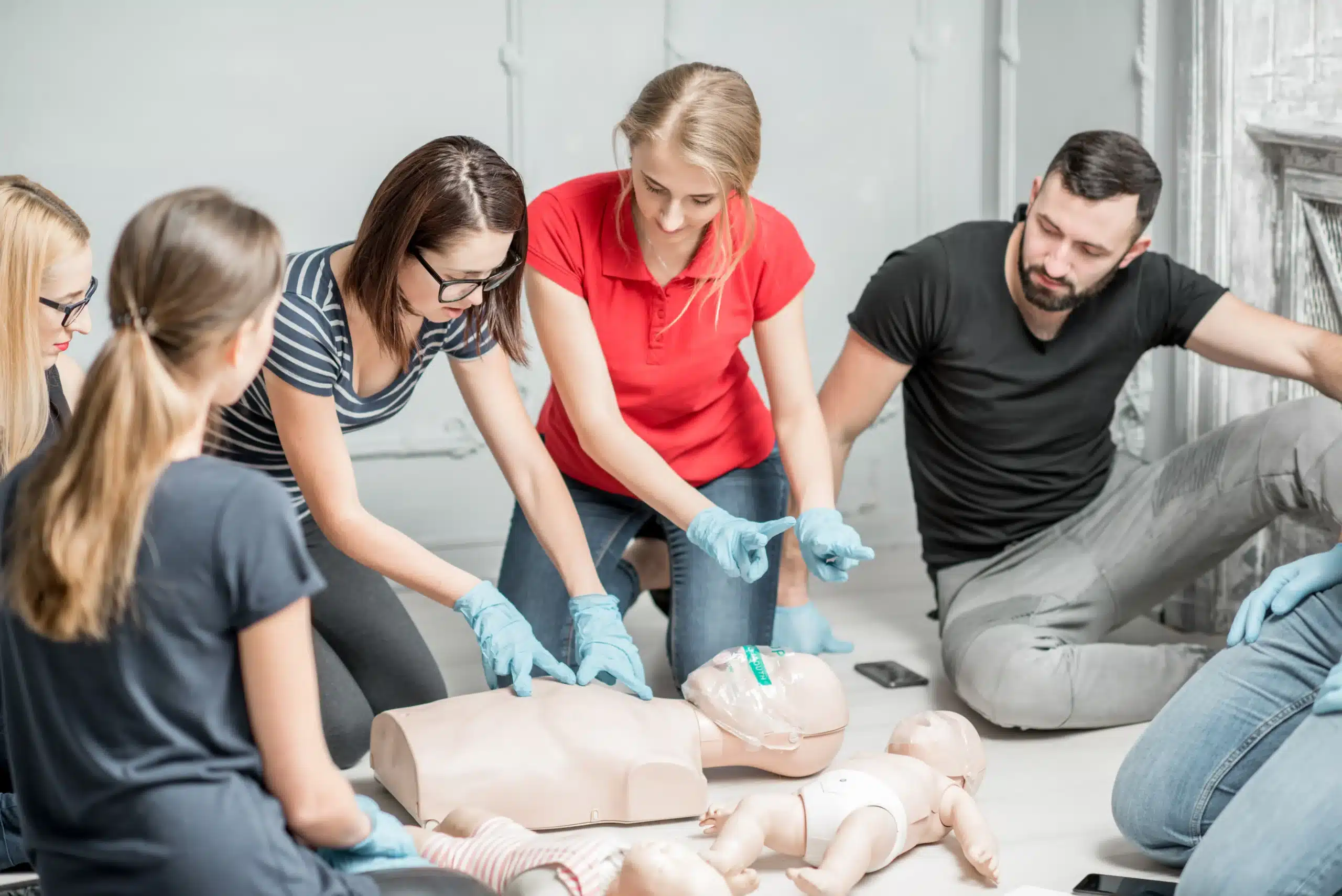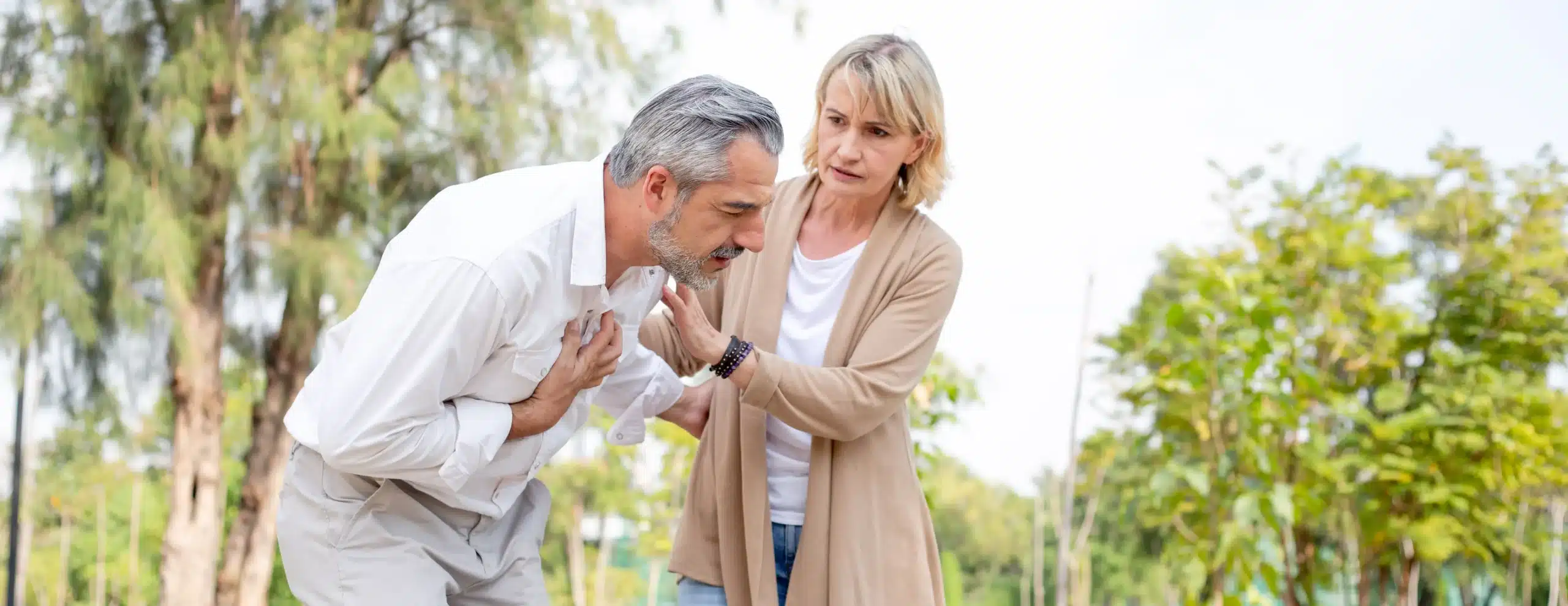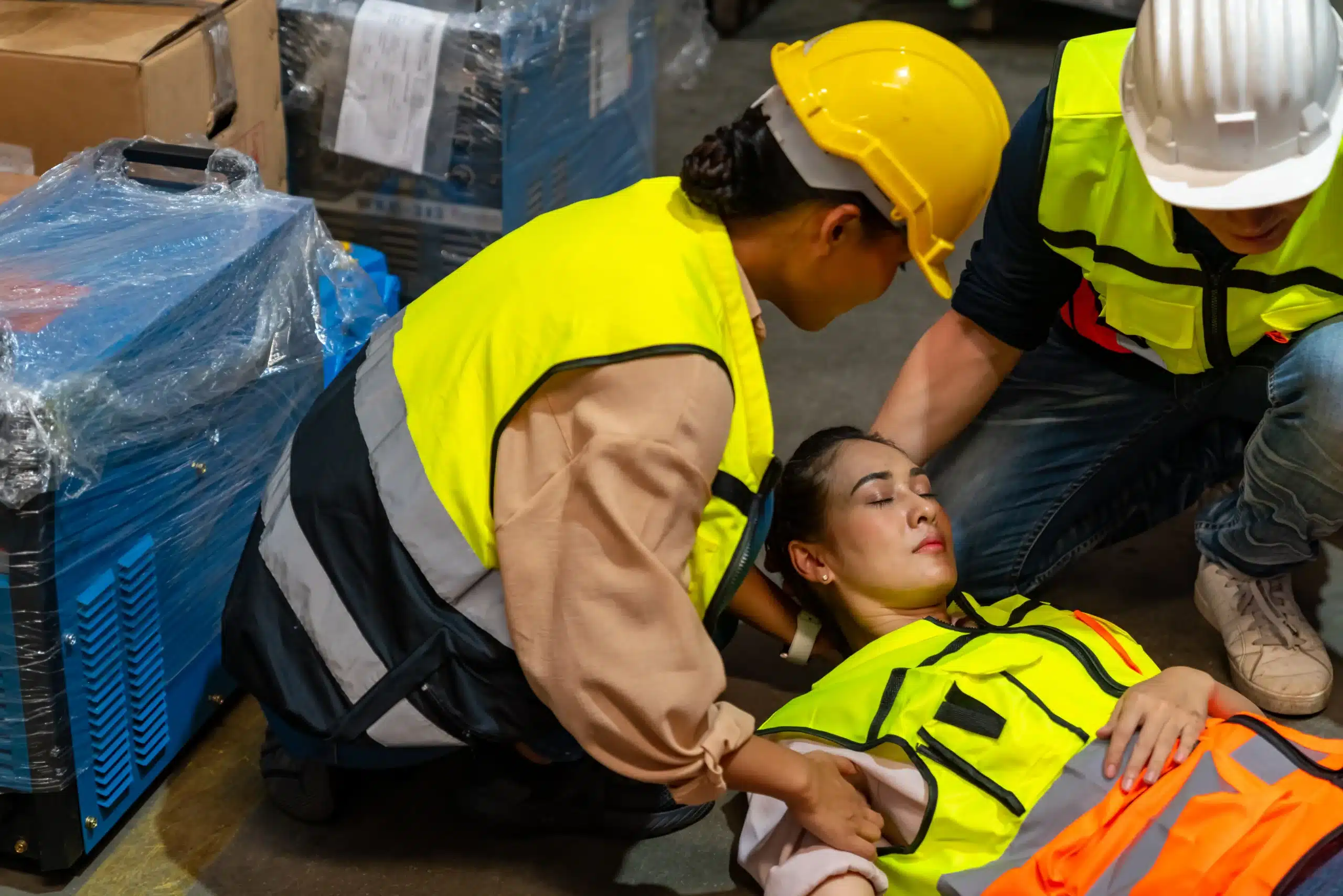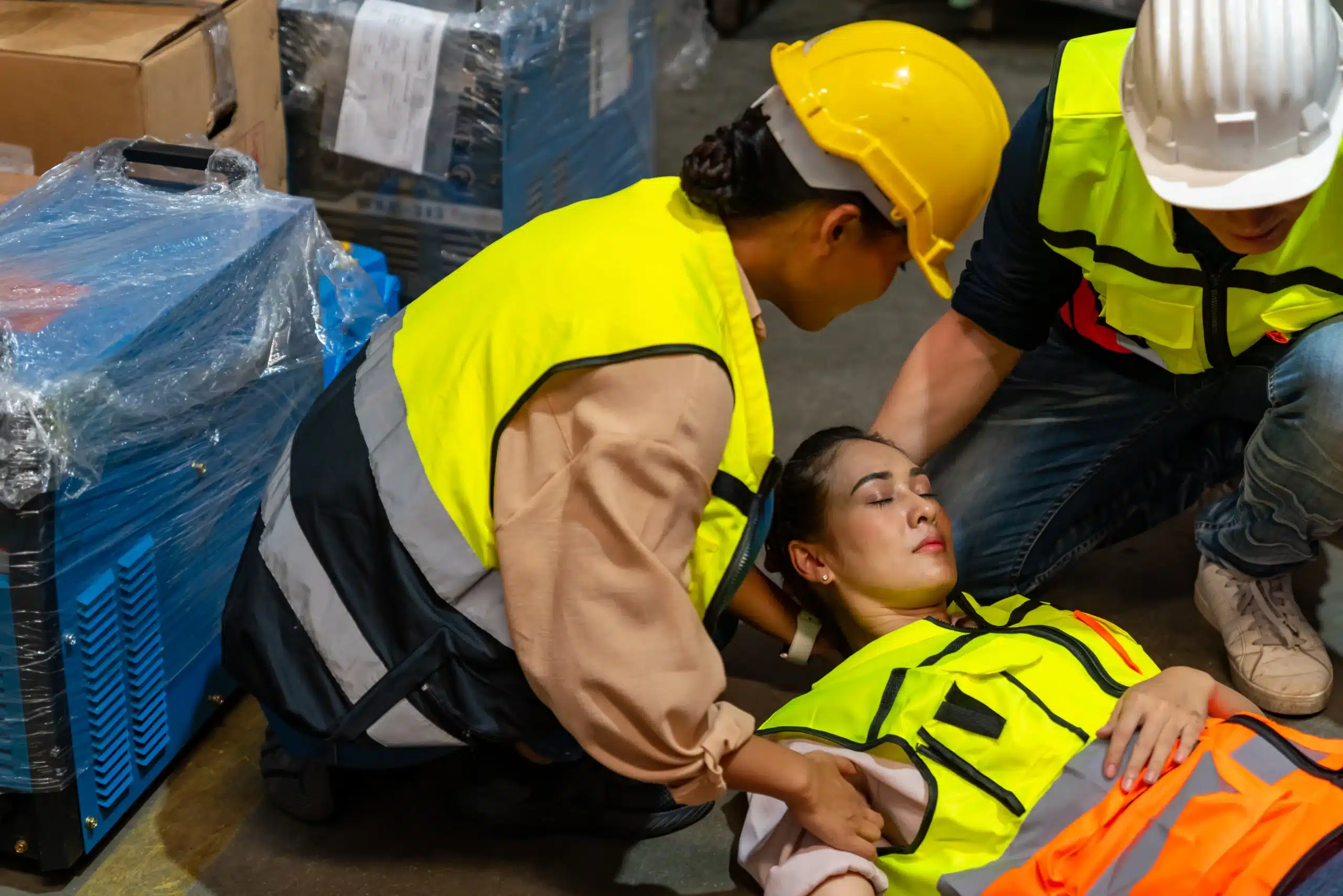CPR is more than just a skill; it’s a responsibility we all share. Learning CPR empowers you to make a real difference in a medical emergency, providing critical care until professional help arrives. This guide breaks down the essentials of CPR, debunks common misconceptions, and offers practical advice on finding the right CPR training in Berkeley and the greater San Francisco Bay Area, including CPR classes San Francisco. Whether you’re a healthcare professional, a parent, or simply a concerned citizen, this guide will help you find the perfect CPR class to fit your lifestyle and goals.
Key Takeaways
- CPR empowers you to save lives: Proper training gives you the confidence to act quickly and effectively in emergencies. Anyone can learn CPR—it’s not just for medical professionals.
- Choose the right CPR class for your needs: Consider factors like certification type, course format (online vs. in-person), and instructor qualifications to find the best fit.
- Maintain your CPR skills through ongoing practice: Regularly refresh your knowledge and skills to stay prepared and confident in your ability to respond to emergencies. Connect with local resources for ongoing support.
What is CPR & Why is it Important?
CPR (Cardiopulmonary Resuscitation) is a life-saving technique used when someone’s heart stops beating. It involves chest compressions and rescue breaths to circulate oxygenated blood to the brain and other vital organs until professional medical help arrives. Learning CPR empowers you to make a real difference in a medical emergency.
What is CPR and how does it save lives?
CPR combines chest compressions and rescue breaths. Chest compressions manually pump the heart, circulating blood throughout the body. Rescue breaths provide oxygen, which the blood then carries to the rest of the body. This combination helps maintain vital organ function until emergency medical services arrive. It’s a critical bridge that can significantly improve the chances of survival. Anyone, from parents and caregivers to community members, can learn this powerful skill.
Debunking Common CPR Misconceptions
One of the biggest myths about CPR is that it’s only for medical professionals. High-quality CPR training equips anyone with the knowledge and skills to perform CPR effectively and safely. Another misconception is that chest compressions alone are enough. While compressions are crucial, rescue breaths are also important. There’s a small chance of rib fractures during CPR, but effective compressions are the priority in a life-or-death situation. Don’t let fear of doing it wrong hold you back.
The Importance of Proper CPR Training and Certification
Proper CPR training gives you the confidence to act quickly and competently during a cardiac arrest. It’s not just about learning the steps; it’s about understanding the principles and developing the muscle memory to perform them effectively under pressure. CPR certification also teaches you to recognize medical emergencies and potentially use an AED (Automated External Defibrillator). These skills are valuable assets, whether at home, in the workplace, or out in the community. Being prepared can truly save a life.
Best CPR Training Providers in the Berkeley Area
Finding the right CPR training can feel overwhelming, so we’ve compiled a list of reputable providers in the Berkeley area. Whether you’re a healthcare professional, a childcare provider, or just someone who wants to be prepared for emergencies, there’s a course out there for you.
Berkeley CPR Classes
Berkeley CPR Classes offers a comprehensive range of American Heart Association (AHA) certified courses, including BLS, ACLS, PALS, and First Aid. They pride themselves on customer service and offer a low price guarantee, making quality training accessible. They also offer RQI and group discounts. Serving Alameda, Oakland, and Berkeley, their classes are conveniently located and available daily.
American Red Cross
The American Red Cross is a nationally recognized organization that provides CPR classes in Berkeley. Their courses cover essential lifesaving skills and offer certification upon completion. The Red Cross’s established reputation makes them a reliable choice.
Revive CPR
Revive CPR offers AHA-certified CPR, BLS, and First Aid classes in the San Francisco area, including Berkeley. Their instructor-led courses emphasize hands-on training to prepare participants for real-life emergencies.
San Francisco Fire Department (NERT)
While the San Francisco Fire Department doesn’t directly offer CPR training to the public, they support the Neighborhood Emergency Response Team (NERT) program. NERT provides free CPR and First Aid training with a focus on community preparedness. This is a valuable resource for those looking for free training options.
CPR Society
CPR Society focuses on community education and preparedness by offering a variety of CPR and First Aid training. Their courses aim to empower individuals with the skills to respond effectively in emergencies.
Find the Right CPR Class in the Berkeley Area
Finding the right CPR class can feel overwhelming, but with a little guidance, you can easily find the perfect fit. This section breaks down the types of courses available, what to expect during a class, and how to choose the best option for your needs and budget. We’ll also explore the pros and cons of online versus in-person training.
Types of CPR Courses
CPR courses aren’t one-size-fits-all. Different courses cater to various needs and professions. Basic CPR and First Aid courses are great for the general public and cover essential life-saving skills. For healthcare providers and those in specific professions, advanced certifications like BLS, ACLS, and PALS are often required. Berkeley CPR Classes offers a comprehensive range of American Heart Association (AHA) certified courses, so you can find the right level of training for your situation. They also offer specialized courses like RQI classes.
What to Expect in a CPR Class
A CPR class is a blend of instruction and hands-on practice. Your instructor will guide you through the steps of CPR, explaining the techniques and the reasoning behind them. You’ll learn how to recognize the signs of a cardiac arrest, how to perform chest compressions, and how to deliver rescue breaths. Hands-on practice is a crucial part of the learning process. You’ll work with a CPR training mannequin to develop the muscle memory and confidence needed to perform CPR effectively in a real-life emergency. This practical experience helps you understand exactly where and how hard to press to provide effective chest compressions. For more information on what CPR entails, check out this helpful resource on CPR Myths.
Online vs. In-Person CPR Training: Pros and Cons
Both online and in-person CPR training have their advantages. Online courses offer flexibility, allowing you to learn at your own pace and on your own schedule. However, it’s important to remember that online CPR training doesn’t fully replicate the hands-on experience of an in-person class. In-person training provides the opportunity to interact with an instructor, ask questions, and receive immediate feedback on your technique. This direct interaction is invaluable for building confidence and mastering the skills needed to perform CPR effectively. While online options exist, in-person training is generally preferred for its comprehensive approach and is often a requirement for certification. To learn more about common misconceptions regarding CPR training, take a look at this article debunking CPR Myths.
CPR Class Costs & Group Discounts
The cost of a CPR class varies depending on several factors, including the type of certification, the course format (online or in-person), and the training provider. It’s always a good idea to compare prices and explore options that fit your budget. If you’re looking for ways to save, consider signing up with a group. Group discounts are often available and can make CPR training more affordable, especially for workplaces, community groups, or families. Berkeley CPR Classes offers a low price guarantee, ensuring you receive high-quality training at a competitive price. You can find more information on CPR class costs and options in this guide.
Choose the Right CPR Class
Deciding on the right CPR class can feel overwhelming with so many options. It doesn’t have to be! By understanding the key differences between courses, you can easily find one that fits your needs and budget.
Key Factors to Consider When Selecting a CPR Course
Several factors influence CPR course costs, including the type of certification, the course format (online or in-person), and the training provider. Think about what you need. Are you looking for a basic understanding of CPR or do you need a specific certification for your job? Healthcare providers often require certifications like ACLS (Advanced Cardiovascular Life Support) or PALS (Pediatric Advanced Life Support). A basic CPR and First Aid certification might be sufficient for teachers, coaches, or childcare providers. Knowing your requirements upfront helps you narrow down your options. Also, consider your learning style. Do you prefer hands-on, in-person instruction or the flexibility of online learning? Berkeley CPR Classes offers both options.
Accreditation and Instructor Qualifications
Accreditation matters when choosing a CPR class. Look for courses certified by reputable organizations like the American Heart Association (AHA). The AHA sets the standard for CPR and BLS training, ensuring the course content is up-to-date and meets high-quality educational requirements. Our courses are AHA-certified. Equally important are the instructor’s qualifications. Experienced, certified instructors can make a significant difference in your learning experience. They can provide personalized feedback, answer your questions, and create a comfortable learning environment.
Free and Low-Cost CPR Training
If cost is a concern, explore free or low-cost CPR training options. The Neighborhood Emergency Response Team (NERT) program, offered through the San Francisco Fire Department, provides free CPR and First Aid training as part of a larger disaster medicine course. This is a valuable resource for anyone wanting to learn these essential skills without a large financial investment. While free courses may not offer the same depth of instruction as paid courses, they can still provide a solid foundation in CPR techniques. Remember to check if the free course offers a certification recognized by your employer or licensing board.
Specialized CPR Courses for Healthcare Professionals
Healthcare professionals often need more specialized training beyond basic CPR. Basic Life Support (BLS) courses cover essential CPR techniques for adults, children, and infants. Advanced certifications like ACLS and PALS are specifically designed for healthcare providers who manage more complex medical emergencies. These advanced courses delve into topics such as airway management, pharmacology, and cardiac rhythms. If you’re a healthcare professional, ensure you’re receiving the appropriate level of training. Berkeley CPR Classes offers a range of courses, including BLS, ACLS, and PALS, to meet the diverse needs of healthcare workers in the Berkeley area. We also offer RQI classes and group discounts. Our low price guarantee ensures you’re getting the best value.
Get the Most Out of Your CPR Training
Getting your CPR certification is a rewarding experience, and these tips will help you prepare for your class, maximize your learning, and maintain your skills. Knowing CPR can truly make a difference—studies show that effective bystander CPR can double or triple survival rates in cardiac arrest cases.
Preparing for Your CPR Class
Before your class, familiarize yourself with the course content so you can walk in feeling confident and ready to learn. Getting a good night’s sleep and wearing comfortable clothing will also help you focus during the training.
Hands-on Practice and Skill Development
CPR classes are designed to be interactive. Take advantage of the opportunity to ask questions and practice your skills on mannequins with your instructor. The more you practice chest compressions, rescue breaths, and other techniques, the more confident you’ll become. Small class sizes, like those offered at Berkeley CPR Classes, ensure you get personalized attention from experienced instructors. This hands-on, instructor-led training is far more effective than voice-assisted mannequin-based learning.
CPR Certification Process and Validity
Once you successfully complete your CPR training, you’ll receive a certification. Remember that CPR certifications typically expire after two years. Mark your calendar so you know when to renew. Staying current with your certification ensures you’re always prepared to respond effectively in an emergency.
Continuing Education and Maintaining Your CPR Skills
CPR isn’t a “learn it once and you’re done” skill. Regular practice and staying up-to-date with the latest guidelines are essential. Consider refresher courses or practice sessions to keep your skills sharp. Even simple things like watching videos or reviewing the materials from your class can reinforce your knowledge and maintain your confidence. The Red Cross offers resources and renewal courses to help you stay current.
CPR Resources and Support in the Berkeley Area
Beyond just getting certified, connecting with local resources can enrich your CPR training journey. Here’s a look at what Berkeley offers:
Local CPR Training Organizations
Berkeley has several reputable CPR training organizations. Berkeley CPR Classes offers a comprehensive range of American Heart Association (AHA) certified courses, from basic CPR and First Aid to advanced certifications like BLS, ACLS, and PALS. They also offer discount group classes. Other providers, like Safety Training Seminars, also offer AHA-certified courses, giving you several options. CPR Education focuses on practical skills and building confidence, which is essential for real-life emergencies. You can find more information about their offerings on San Pablo CPR Classes.
Community CPR Awareness Initiatives
Berkeley actively promotes CPR awareness through various community initiatives. These programs aim to increase the number of CPR-trained individuals, creating a safer environment. You can often find information about these initiatives through local community centers, hospitals, or online resources like Bay Area CPR.
Finding CPR Equipment and Supplies
Locating CPR equipment and supplies is straightforward in Berkeley. Many local pharmacies and medical supply stores stock essential items like CPR manikins, face shields, and even AED trainers. Knowing where to find these resources can be helpful for both individuals and organizations. For professional-level equipment, check with medical supply companies or training organizations like San Pablo CPR Classes for recommendations.
Connecting with Local CPR Instructors and Experts
Connecting with experienced CPR instructors can deepen your understanding and skills. Reading reviews can often highlight instructors who are knowledgeable, patient, and create a positive learning environment. Look for instructors who emphasize hands-on practice and provide personalized feedback. This can significantly improve your confidence in performing CPR. Many instructors are also active in the community and can offer insights into local resources and ongoing training. Don’t hesitate to reach out to local training centers and inquire about their instructors’ backgrounds and teaching styles.
Related Articles
- Why CPR is Important in Healthcare – Berkeley CPR Classes
- CPR Myths You Need to Stop Believing – Berkeley CPR Classes
- CPR Classes in Berkeley: Your Certification Guide – Berkeley CPR Classes
- CPR Certification in Berkeley: Your Complete Guide – Berkeley CPR Classes
- CPR & First Aid Training in Berkeley: Your Guide – Berkeley CPR Classes
Frequently Asked Questions
What are the different types of CPR certification, and which one do I need? CPR certifications range from basic to advanced. Basic CPR and First Aid are suitable for the general public and many workplaces. Healthcare providers, however, typically require more advanced certifications like BLS (Basic Life Support), ACLS (Advanced Cardiovascular Life Support), or PALS (Pediatric Advanced Life Support). The best way to determine the right certification for you is to consider your specific job requirements or personal needs.
How long is a CPR certification valid, and how do I renew it? Most CPR certifications are valid for two years. Renewal involves retaking the course to refresh your skills and ensure you’re up-to-date with the latest guidelines. It’s a good idea to mark your calendar or set a reminder so you don’t let your certification lapse.
What’s the difference between online and in-person CPR training? Online CPR training offers flexibility, allowing you to learn at your own pace. However, it often lacks the crucial hands-on practice with a CPR mannequin and the direct interaction with an instructor that in-person training provides. While online courses can be a good starting point, in-person training is generally preferred and often required for certification.
How much does a CPR class cost, and are there any discounts available? The cost of a CPR class varies depending on the type of certification, the course format, and the training provider. Many providers offer group discounts, which can be a great option for workplaces, community groups, or families. It’s always wise to compare prices and look for low-price guarantees.
Where can I find CPR training in Berkeley? Several organizations offer CPR training in Berkeley, including Berkeley CPR Classes, the American Red Cross, and CPR Society. When choosing a provider, consider factors like accreditation, instructor qualifications, course content, and schedule flexibility. Reading reviews and comparing options can help you find the best fit.


